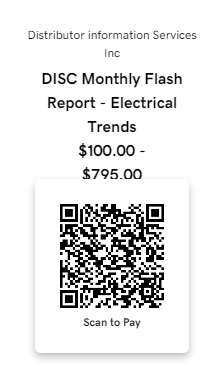Dare We Say the “R” Word – DISC June Outlook Overview
 As we get to the midpoint of the year and companies meet for mid-year reviews and discuss their second half strategies, perhaps on of the most important industry forecasts / outlooks is released.
As we get to the midpoint of the year and companies meet for mid-year reviews and discuss their second half strategies, perhaps on of the most important industry forecasts / outlooks is released.
Christian Sokoll at DISC Corp just released DISC’s monthly Flash report to its subscribers. The forecasts for the remainder of the year, and next year, is not encouraging … which may be optimistic, especially in light of the Federal Reserve’s move to increase interest rates.
And while the new Fed rate is still, based upon history, “reasonable”, the current projections is that the Fed rate will end the year between 3.25-3.50%, an increase of another 1.5-1.75 points. Given that the 30 year mortgage rate is slightly over 6%, it means it will could be closer to 7.5-8.25% by the end of the year. What will this mean for the residential new construction market? For home equity loans which are used to fund renovations?
While the residential market is a nominal segment of the electrical market, and the increase in interest rates should have minimal affect on construction starts through this year (those projects are already funded), it can impact 2023.
The industrial market’s dynamics may be different.
And the challenge with an economic slowdown is companies don’t recognize it until it has already started and listening to the media would make one believe we’re heading to worse than 2008.
DISC Outlook
Christian offered to share a brief summary of the current report:
“Here at DISC we have been hesitant to use the “R” word. Well, here it comes; recession is highly likely and appears to be on our doorstep.
A recession is a noteworthy decline in overall economic activity defined by the National Bureau of Economic Research as “a significant decline in economic activity spread across the economy, lasting more than a few months, normally visible in real GDP, real income, employment, industrial production, and wholesale-retail sales”.
Looking at the electrical distribution economy we have enjoyed steady growth from 2008 to 2018 (other than a global oil-fueled market slump in 2016). We started to slow in 2019, and we don’t need to remind anyone of the 2020 pandemic drop.
2021, the recovery year, saw impressive results backed by skyrocketing price hikes across the board.
For 2022, DISC forecasts continued positive year-over-year performance with a caveat. Our industry is a big ship at roughly $140 Billion. It takes a bit to slow down, DISC is forecasting quarterly declines in year-over-year performance starting Q2 2022 and continuing through 2024. We had forecast negative YoY growth beginning in the 2nd quarter of 2023 and continuing through 2024. The latest round of interest rate hikes affirms our forecast and will slow future construction investment, large capital purchases, and business financed expansion.
This potential recession is not exclusively American. The World Bank is now forecasting global growth to slow to 2.9% in 2022 and they expect to stay near that for 2023 and 2024. This is significantly down from the World Banks’ 2021 published growth rate of 5.7%.
Overall, the economy has had a long and robust period of expansion, 129 months to be exact, from June 2009 to February 2020. Post pandemic inflation has forced changes in economic policy, namely interest rates, that are working to damper the rise in prices. The Fed just added 75 basis points to the benchmark rate (the largest increase since 1994). We may see additional rate hikes with the expectation for the Federal funds target rate to finish the year at 3.4%. These rate hikes discourage financed purchases thus lowering demand, and over time, pushing prices down. A key thing to remember is that markets look forward, the easing and severity of recessions are driven by monetary policy, promoting production, and steering clear of trade restrictions.
If you would like to dive deeper into the electrical economy and our forecasts for the construction, industrial, institutional, and utility verticals, drop us a note or give us a call or email me. The DISC Monthly Flash Report provides insights to guide you while you navigate this turbulent market.”
If you’d like to order this month’s issue of the DISC Flash Report, the cost is only $100. An annual subscription is $895, however, ElectricalTrends readers receive a $100 discount. Click here to order or scan this QR code.
Report, the cost is only $100. An annual subscription is $895, however, ElectricalTrends readers receive a $100 discount. Click here to order or scan this QR code.
Takeaways
Some thoughts:
- While the NBER has their definition of a recession, they “call” a recession a “recession” in hindsight.
- The current market will mask signs of a recession for many due to many companies’ backlogs. Sales will appear to be good as backlogs get filled and quotation activity (as contractors seek quotes from “everyone” and then requote projects) will be strong, however, distributors need to track their stock activity and their project close rate. There are some other metrics that you can consider as an “early warning system.”
- Companies need to decide if they are in a position to be aggressive to “take advantage of a recession” or if they will be “conservative” and circle the wagons. This is a real challenge for many manufacturers as they consider a major stakeholder … shareholders and Wall Street analysts. For distributors, much will depend upon their ownership’s timeframe. The message both send to their staffs will determine where talent flows.
- Geopolitics, macro-economics and business segment focus, along with micro-segment marketing can impact strategy. It all comes down to where your opportunities are for growth / taking share as, in our opinion, while there will be a national recession, it will not treat all geographic areas or end-user industries similarly. There will be winners and losers.
- From a marketing viewpoint, goals, and metrics, need to focus around customer penetration, market share and taking share.
- From a cost viewpoint, it’s about managing it and recognizing that a reduction in loss is actually an improvement in profit (especially in today’s fuel environment).
Inevitably it is a “back to basics” approach but in a more nuanced industry that has more competitors than ever before.
A couple of suggestions …
- Order the report
- Encourage your team to review
- Schedule an internal meeting to discuss “how could this impact us” and start developing a second half plan as well as start early 2023 planning
And I’d be remiss in not saying “considering calling Channel Marketing Group to assist in ideation.” We can help in identifying early warning metrics, recommend strategies to consider now and down the line … plus it never hurts to have an unbiased, albeit informed, viewpoint.




















